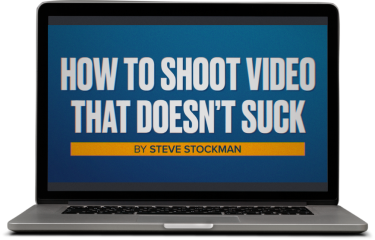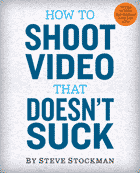Going through old family photos you find one of an old birthday party that a hits you hard and fast. BANG– you’re in the middle of serving the cake. The little birthday girl in her impossibly frilly dress sits at the head of the table, propped up on a stack of 1953 telephone books. Long-dead relatives in jackets and ties and dresses stare uncomfortably at the camera, some smiling a little, but most feeling the formality of the moment in a way that’s fills us with nostalgia. The kids are on their best behavior. It’s like they knew we’d be looking, nearly 60 years later.
We process visual information very quickly. Brain scientists tell us that we not only absorb it fast, we absorb it thoroughly. We rarely get much more information from looking longer– we’ve already taken the picture in, and our brains are ready for the next thing. The same is true in video. We process static shots fast, then get bored.
Which is why when you watch great videos, movies, or television, you’ll rarely see shots that are more than 10 seconds long. Most are much shorter. These short shots are part of modern film language. We expect the richness of language that comes with many images hitting us in succession, each carrying picture and sound that deepen our understanding of what’s going on.
Shooting shorter shots gives your video more impact. At your daughter’s next soccer game, instead of turning on the camera and leaving it running, try this: A shot of the crowd of parents watching the game, and CUT. The team taking the field, and CUT. Your daughter as the ref drops the ball, and CUT. A quick shot of her making a play, and CUT. Continue for 20 more shots.
In 20 years, when you play the footage at her wedding, the three minutes of short shots you’ve compiled will richly recall a time and a place with more information and feeling than if you had let the shots drag on.

Get a free preview of the new video course!
Sample two lessons from our new video course free right now. No signup or credit card required!






 Steve Stockman is a writer/ producer/ director in Los Angeles. How to Shoot Video That Doesn't Suck, available in 9 languages, is the best selling video how-to book in the world. You can find the updated (2017) edition from Workman Publishing wherever you get books, ebooks or audiobooks.
Steve Stockman is a writer/ producer/ director in Los Angeles. How to Shoot Video That Doesn't Suck, available in 9 languages, is the best selling video how-to book in the world. You can find the updated (2017) edition from Workman Publishing wherever you get books, ebooks or audiobooks. 
5 Comments